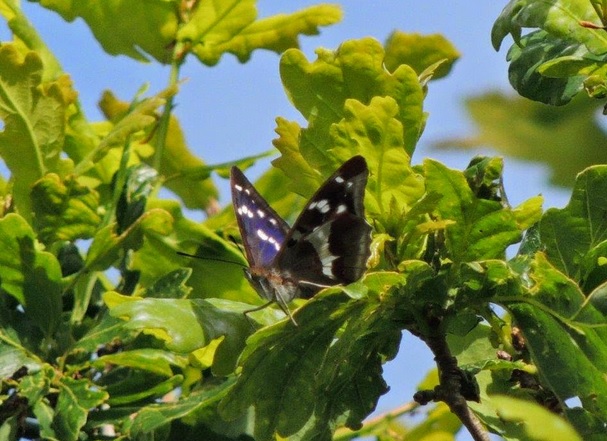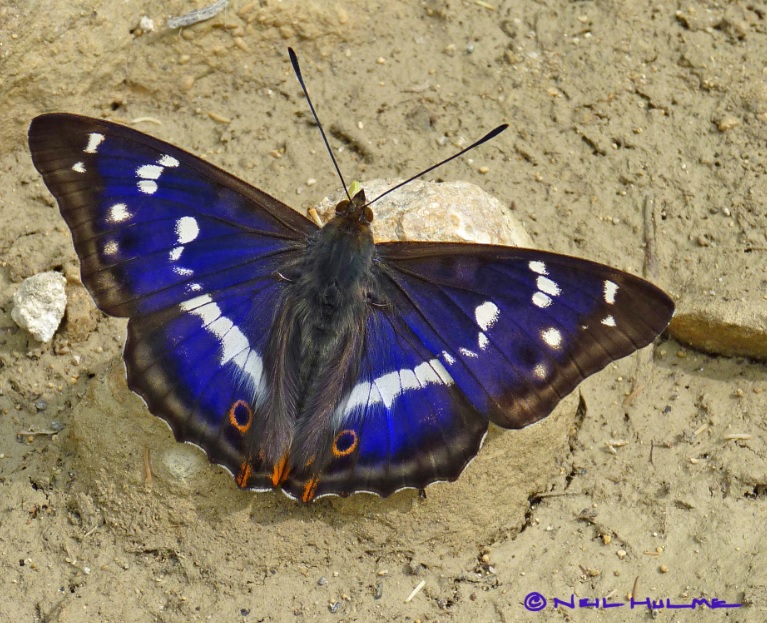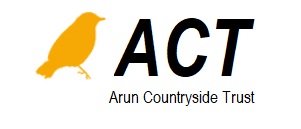
In his brilliant, funny book ‘In Pursuit of Butterflies: a fifty-year affair’, Matthew Oates calls the Purple Emperor ‘His Imperial Majesty’, as did the old entomologists.
The Purple Emperor butterfly is sometimes spotted in the MAVES area. On the Knepp Castle Estate, not far away, you can go on a guided 'Purple Emperor Safari' for a close encounter - so Mike and I did just that. A group of twelve set out on a hot July morning, guided by enthusiastic experts Neil Hulme and Matthew Oates, in an inspired wander round habitat areas of a wildness you'll rarely see in England today.
Knepp is an estate near Horsham, fifteen years into the process of being ‘rewilded’, and Purple Emperors love it. Their caterpillar food plant, sallow, springs up everywhere in what were once agricultural fields, and there are plenty of huge oaks, the other plant they need. In the course of the day I saw 20; the two guides saw 43.
Our day followed the butterfly’s day. In the morning we were hoping for a sight of it ‘sallow-searching’, or looking for newly hatched females (by smell) around big sallow bushes. Sallow-searching Purple Emperors were hard to see for long, though their big dark shape was easy to identify. They are larger and move faster than any other butterfly up there. I was often lagging behind when the leading people shouted out a sighting. Matthew and Neil had told us to freeze when one was seen – no-one did, but we tried to catch up and often did get a look. Another place to find them as the day went on was zig-zagging towards intoxicating sap runs from broken branches in big oak trees. We were told about this and duly saw one zig-zagging – more shouts.
Lunch was a wild picnic, under a tree by a mud wallow which a pig had just vacated. Pigs share the land with cows and horses, and their hooves break up the ground, making it ideal for sallow seed to germinate in, so the animals are part of the land’s new attractiveness for Purple Emperors.
Our afternoon return was by a different route, and we were looking in the tops of oak trees for Emperors doing what they do in the afternoon, displaying to attract females and aggressively defending territories. The sightings became more and more dramatic as we became more and more tired. Near the end, two having a dogfight, zipping and twisting close to each other in the air at incredible speed, were the revelation we had been waiting for. They seemed to go on fighting for at least half an hour and probably continued once we had gone. They are so aggressive that they attack birds, so a squawking bird arising from the canopy can tell you to look for a Purple Emperor. Neil and Matthew once spurred on a fighting pair by singing skinhead football chants.
There were many other revelations, as when at last I got binoculars fixed on one in the canopy with his wings open. The ‘purple’ is not a pigmented colour but an iridescence effect which happens if the sun catches the wing cells at the right angle. I could not see purple in that intimate moment, but the black and white were splendid in themselves. Matthew’s book relates watching them fighting from above, in a cherry-picker, when the flashing purple is very visible.
So what is known about the Purple Emperors in the MAVES area? Someone living within Binsted Woods once found a dead one in a drawer! They were recorded in past surveys, and people who walk regularly on the public rights of way that crisscross the area do occasionally see them in high summer. Mike and I went out to look for them the next day, another hot morning. We didn’t see any, but then they do tend to stay high up above the highest trees, unless there is an energy-rich fox scat to tempt them down ...

Emma Tristram
